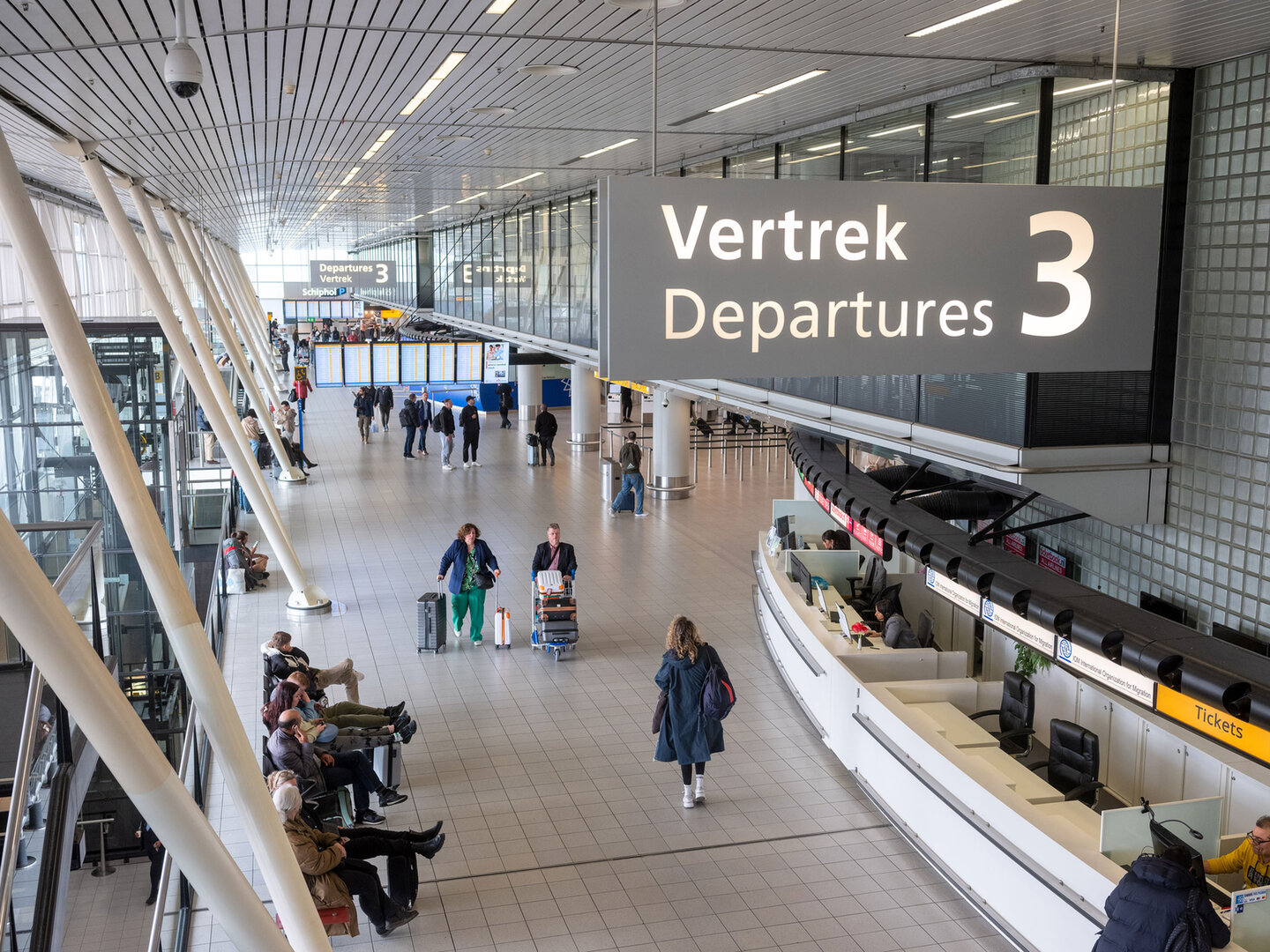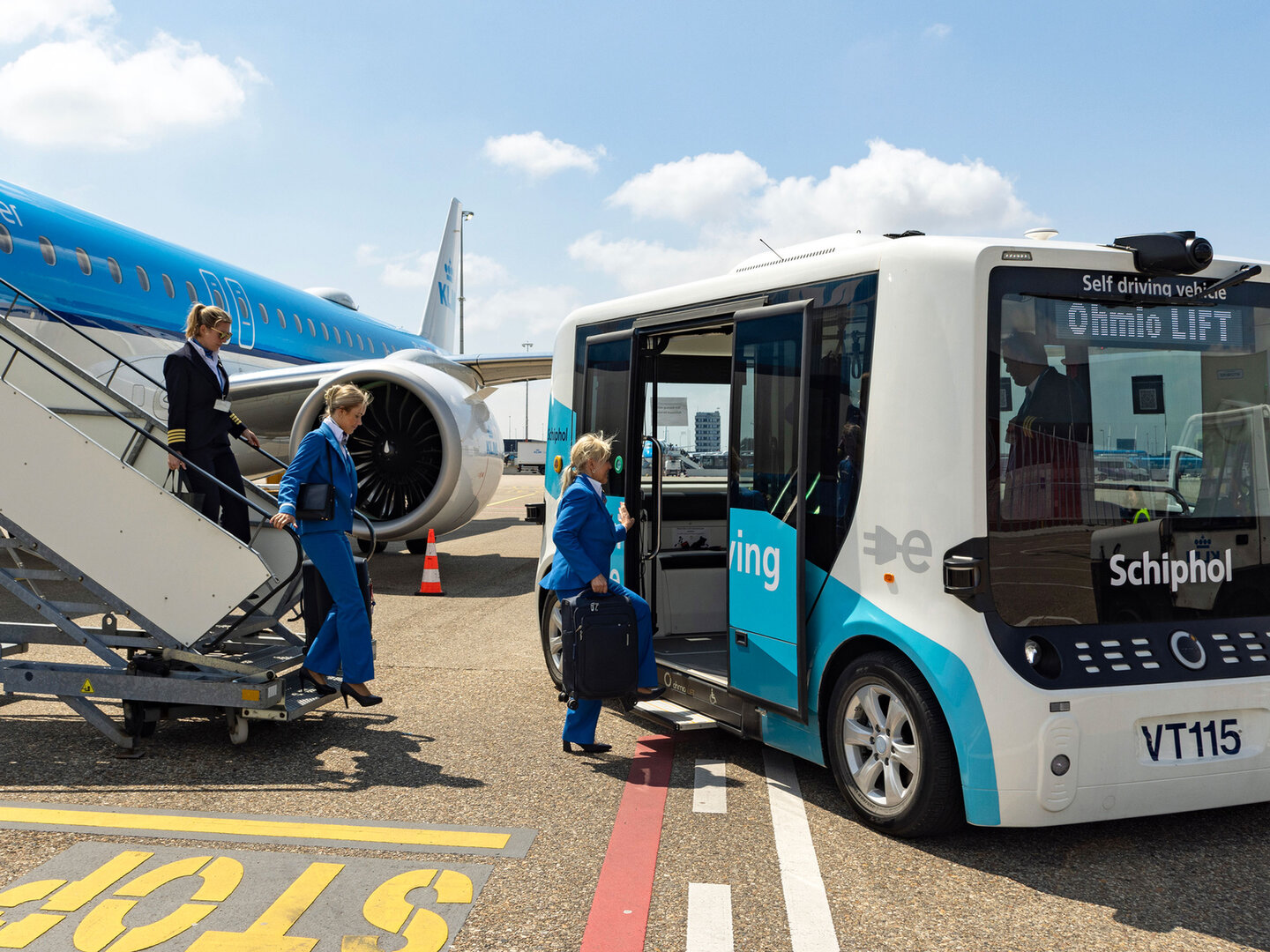Feature
Schiphol’s flight path to a circular future
Schiphol Airport's 25-year vision, fuelled by a €6bn investment plan, aims to hit its sustainability targets by 2030 and 2050. Frances Marcellin looks at some of its leading initiatives.

Zero waste, zero emissions – Schiphol Airport's bold 25-year vision is just getting started. Credit: Amsterdam Airport Schiphol
Air travel generates nearly 2% of global carbon emissions. According to a McKinsey and World Economic Forum-driven study, $5trn in Capex funding by 2050, or $175bn per year, is required for aviation to reach a net-zero target by 2050.
Amsterdam’s Schiphol Airport is on a quest to achieve emission-free operations by 2030. With passengers rising by 9% in 2024 at Royal Schiphol Group (RSG) airports – 36.1 million compared with 33 million at HY 2023 – it is leveraging the boost in business to accelerate its evolution.
With net revenue also rising – €99m in HY 2024 compared to €44m in HY 2023 – it launched a €6bn investment plan at Schiphol Airport to overhaul the airport’s facilities through a sustainability lens between now and 2029.
According to Robert Carsouw, RSG’s CFO, despite an encouraging balance sheet, improving the airport’s service quality and infrastructure is essential for meeting financial projections and long-term targets.
“Our investment plans of €6bn in the next five years are larger than ever before and fundamental to achieve this,” Carsouw said following the announcement of the investment plan in August. “Realising our ambitions requires a significant step-up and acceleration of our operational cash flows, without losing focus on our competitiveness.”
Scoping and scaling
While around 3% of an airport’s emissions comes from sources it can manage directly, roughly 97% originates from external ecosystem partners, such as airlines, which fall outside of its control. Dividing emissions into Scope 1 (power plants and vehicles), Scope 2 (energy production) and Scope 3 (mostly output from airlines), enables airports to focus on their own operations.
The Airport Carbon Accreditation (ACA) scheme supports this by providing an accreditation scheme in sync with worldwide decarbonisation targets. Schiphol has already reached the highest classification, ACA level 5, a result of cutting Scope 1 and 2 emissions by 90% compared to 2010.

Schiphol's infrastructure revamp is hoped to improve its environmental credentials beyond ACA level 5 standards. Credit: Amsterdam Airport Schiphol
However, this top level is only awarded if the airport is also addressing Scope 3 emission sources, which includes the handling and road traffic on the airport site as well as everyday airport operations.
Beyond the ACA level 5 standards, the airport is pursuing a strategy that will keep improving results across the three Scope categories. Through its €6bn infrastructure revamp, Schiphol is undertaking an airport-wide upgrade.
Areas of focus include climate-control systems, gas grid-free heating, cooling and thermal storage systems, and new escalators, aircraft stands, and taxiways. Additionally, a new baggage basement will be built starting in 2026 paving the way for an entirely new optimised system, which it is hoped will reduce energy use and carbon emissions.
Decarbonising ground operations
A key aspect of the plan involves transitioning from fossil fuel-powered vehicles to electric. In September 2024 Schiphol bought 52 new electric buses to replace its existing ten-year-old shuttle bus fleet from MAN, featuring a more spacious design that improves the user experience and passenger flow. A reimagined rest area for drivers will produce more energy than it uses, further reducing carbon usage.
Jan Zekveld, head of innovation at Royal Schiphol Group, is envisaging an “emission-free and autonomous ground operation by 2050”. Supporting this goal, a two-part pilot scheme ran earlier this year. An initial test saw two self-driving Ohmio buses running a fixed route for workers near several cleaning and ground handling stops.
With 89% of evaluation respondents during the trial confirming that they felt safe and ready to reuse the service, part two of the project resulted in a partnership between Ohmio and KLM’s ground services. The buses, which boast a 30-metre detection system and LIDAR-enabled 360 view, have since been transporting crew between the apron and terminal at the airport.

The Ohmio shuttles are being used to transport KLM Cityhopper crew to and from their aircraft. Credit: Royal Schiphol Group
In a world first, KLM Cityhopper, the group’s regional airline subsidiary, is also testing a mobile hydrogen-powered ground power unit (GPU) at the airport. Developed by Dutch manufacturer Zepp.solutions, the GPU enables a full charge of aircraft in minutes instead of hours. Another advantage is that as they are mobile and can be filled by a tanker, these units could relieve the demand on overbooked electric GPUs and the resulting continuing reliance on diesel GPUs.
“It is important that we develop hydrogen-powered equipment to achieve an emission-free ground operation,” Maarten Koopmans, KLM Cityhopper MD said during the announcement of the initiative in August. “Today's battery solutions do not always meet operational requirements.”
The project is partially funded by a €25m investment from the EU under the TULIPS scheme, which aims to advance low-carbon mobility in airports over the next four years.
Going circular and chasing the 1%
In addition to being energy positive, RSG is striving to operate a circular economy by 2050. Achieving this objective requires reaching a midway goal of zero waste by 2030, which it defines as a “resource loss of less than 1%”. This means that all raw materials and products will be “reused or recycled to the highest degree possible”. These principles feed into the design and construction of new buildings and revamps.
“The lifetime of an asset determines the amount of maintenance and renovation needed, RSG wants to achieve the maximum output from its resources by allowing them to ‘circulate’ for as long as possible,” Denise Pronk, head of sustainability at Schiphol Airport, wrote in a 2019 ICAO sustainability report, adding that durability is also a key consideration with embodied carbon affecting the carbon footprint of a material.
“It considers how many greenhouse gases are released throughout the supply chain (mine – produce – transport – use – waste). The design and construction of assets are key elements in achieving the zero-waste goal.”
Targeting the intersection of consumer demand, hospitality, and sustainability, the airport is also intending to make 60% of its food offering plant-based by 2030.

Burger King has launched the exclusive Veggie Crunchy Chicken Deluxe burger, available only at its Schiphol location. Credit: Royal Schiphol Group
According to RSG, as well as improving consumers’ responsible choices, it will also impact its emissions quota as “animal products account for a large share of the CO2 emissions from Schiphol’s catering outlets”. In 2024, more meat-free choices have landed across its food stores, such as Burger King, through a partnership with plant-based brand The Vegetarian Butcher, and LEON serving meat as a side order rather than the main dish.
As traffic figures continue to rise – September’s 6 million passengers is a 4% increase on last year – Schiphol is continuing to scrutinise every aspect of its operations. Even extending to sustainably optimal cleaning contracts which were announced as undergoing tender last week.
“We are working hard to improve our infrastructure, working conditions and services to passengers and airlines,” says Sybren Hahn, Schiphol’s executive director of infrastructure. “We are taking major steps; replacing, renewing, and making Schiphol more sustainable at a pace never seen before.”